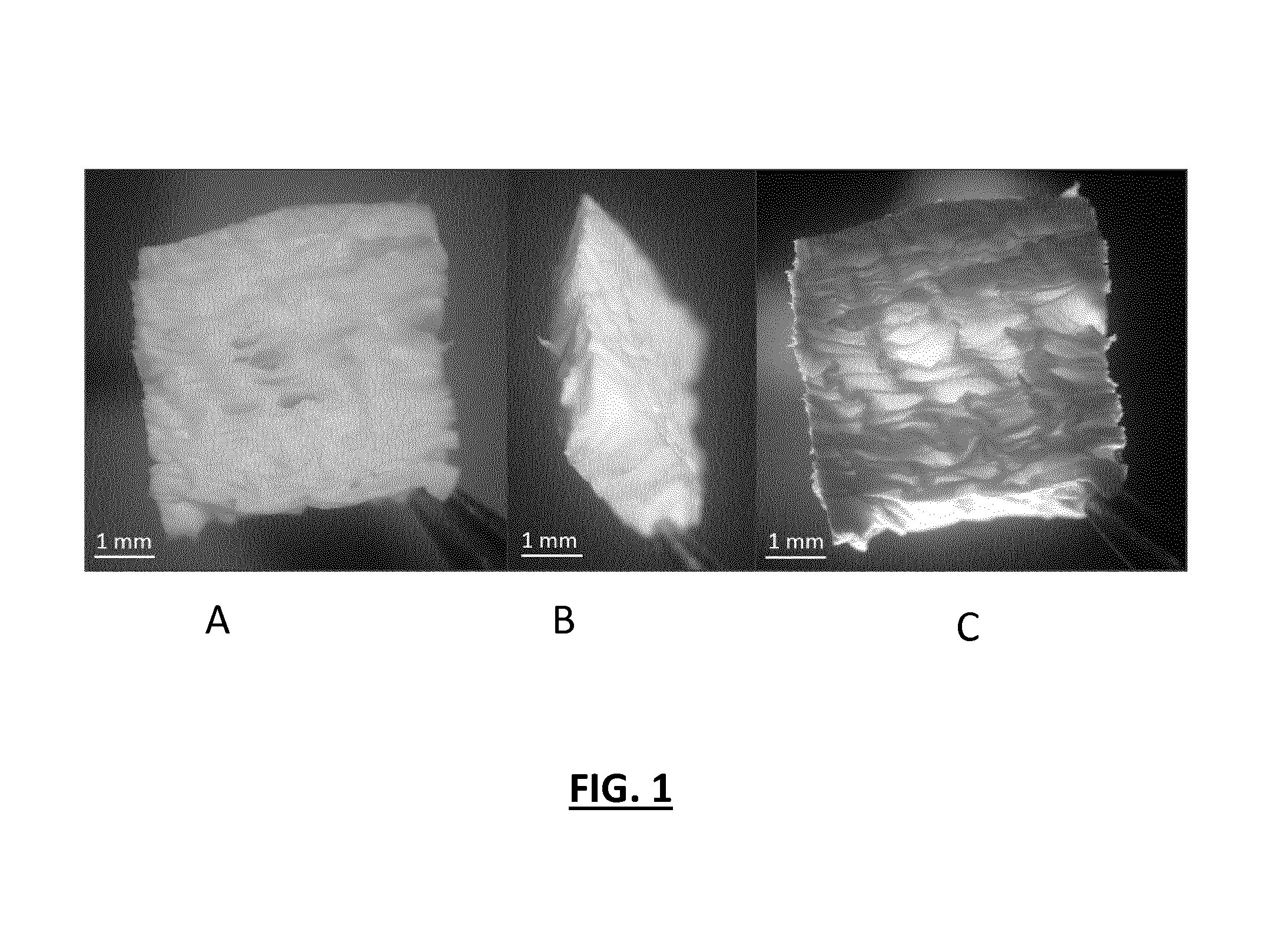Three-Dimensional Scaffold Functionalized with Micro-Tissues for Tissue Regeneration
a tissue regeneration and micro-tissue technology, applied in the field of biomaterials, can solve the problems of unsatisfactory bone regeneration processes, current approaches that do not allow sufficiently robust bone regeneration, and limited thickness of implants, so as to achieve efficient inducing bone regeneration in vivo and enhance the
- Summary
- Abstract
- Description
- Claims
- Application Information
AI Technical Summary
Benefits of technology
Problems solved by technology
Method used
Image
Examples
example 1
Material and Methods
[0103]Chemicals.
[0104]Poly(ε-caprolactone) (PCL), Capa 6800 (Mw=80000) analytical grade, was obtained from Perstorp (Industriparken, Sweden). PCL was dissolved in a mixture of dichloromethane / dimethylformamide (DCM / DMF 40 / 60 vol / vol) at 27% wt / vol and was stirred overnight before use to ensure good polymer solubilisation.
[0105]Electrospinning
[0106]A standard electrospinning set-up Apparatus EC-DIG purchased from IME Technologies (Eindhoven, Netherlands) was used to fabricate the PCL three-dimensional nanofibrous scaffolds. The PCL solution was poured into a 5 mL syringe and ejected through a 21G needle of 0.8 mm diameter at a flow rate of 1.2 mUh thanks to a programmable pump (ProSense). The electrospun hjet was focused thjanks to the use of a poly(methyl metacrylate) (PMMA) plate of 2.5 mm thick pierced with a hole (25 mm in diameter) placed over the conductive collector. The collector was placed at a distance from the needle of 16 cm. A voltage of +15 kV was ap...
example 2
Scaffold Functionalized with Microtissues (In Vitro)
[0136]The comparative Example was repeated, except that the scaffold was seeded with living human osteoblasts microtissues instead of living human osteoblasts single cells.
[0137]The microtissues were prepared according to the protocol indicated above, using a GravityPLUS™ plate for hanging-drop cell culture from InSphero AG (Zurich, Switzerland).
[0138]The incorporation, cell colonization, proliferation and bone induction by the living human osteoblasts microtissues into the scaffold was studied.
[0139]In particular, the behavior of the cells in contact with the scaffold observed by fluorescence microscopy showed that the microtissues remain viable after incorporation into the scaffold (FIG. 2D). The behavior of the osteoblasts microtissues and the capability of the functionalized scaffold to induce bone regeneration after colonization and proliferation were studied by SEM. The behavior of the microtissues with time after the deep co...
example 3
Scaffold Functionalized with Microtissues (In Vivo)
[0143]Using Thick scaffolds functionalized with osteoblasts microtissues prepared in Comparative Example and in Example 2, subcutaneous and calvaria implantations were realized in nude mice (FIG. 5A-D).
[0144]The results for the scaffolds functionalized with the living microtissues showed that, after 4 weeks, cells have migrated into the scaffold, colonizing the scaffold even deep within, and also show evidence that bone induction has occurred (FIGS. 5B and 5D).
[0145]It is further noted that bone induction is faster for scaffolds functionalized with microtissues in comparison to scaffolds functionalized with osteoblast single cells (FIGS. 5C and 5D). Indeed, the comparison of the amount of mineralized matrix yields 8% mineralized area for the scaffold functionalized with osteoblast single cells against 22% mineralized area for the scaffold functionalized with microtissues.
[0146]Further, mice calvaria implantations have been carried o...
PUM
| Property | Measurement | Unit |
|---|---|---|
| thickness | aaaaa | aaaaa |
| size | aaaaa | aaaaa |
| thickness | aaaaa | aaaaa |
Abstract
Description
Claims
Application Information
 Login to View More
Login to View More - R&D
- Intellectual Property
- Life Sciences
- Materials
- Tech Scout
- Unparalleled Data Quality
- Higher Quality Content
- 60% Fewer Hallucinations
Browse by: Latest US Patents, China's latest patents, Technical Efficacy Thesaurus, Application Domain, Technology Topic, Popular Technical Reports.
© 2025 PatSnap. All rights reserved.Legal|Privacy policy|Modern Slavery Act Transparency Statement|Sitemap|About US| Contact US: help@patsnap.com



